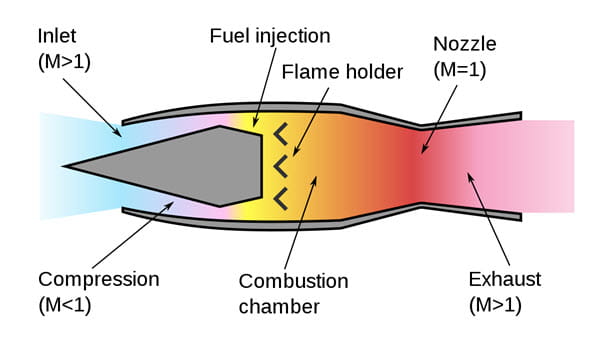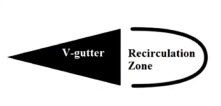# FLAME HOLDER:
Table of Contents:
- What Is Flame Holder?
- Eddy
What Is Flame Holder?
A flame holder is a component of a jet engine designed to help maintain continual combustion. All continuous-combustion jet engines require a flame holder. A flame holder creates a low-speed eddy in the engine to prevent the flame from being blown out. The design of the flame holder is an issue of balance between a stable eddy and drag.
A Simple Diagram of Ramjet Operation

The simplest design, often used in amateur projects, is the can-type flame holder, which consists of a can covered in small holes. Much more effective is the H-gutter flame holder, which is shaped like a letter H with a curve facing and opposing the flow of air. Even more effective, however, is the V-gutter flame holder, which is shaped like a V with the point in the direction facing the flow of air. Some studies have suggested that adding a small amount of base bleed to a V-gutter helps reduce drag without reducing effectiveness. The most effective of the flame holders are the step type flame holder and the strut type flame holder.
Eddy:
In fluid dynamics, an eddy is the swirling of a fluid and the reverse current created when the fluid flows past an obstacle. The moving fluid creates a space devoid of downstream-flowing fluid on the downstream side of the object.
Fluid behind the obstacle flows into the void creating a swirl of fluid on each edge of the obstacle, followed by a short reverse flow of fluid behind the obstacle flowing upstream, toward the back of the obstacle. This phenomenon is most visible behind large emergent rocks in swift-flowing rivers.
Half V-Gutter

V-Gutter

Ramjet Engine

